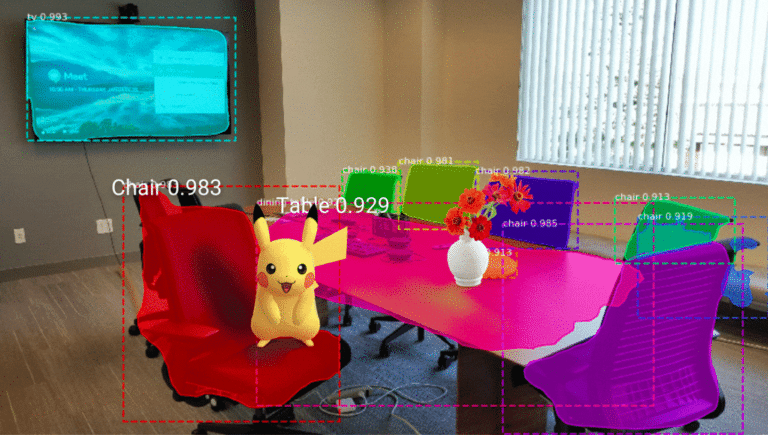
This post is adapted from the recent ARtillry Intelligence Briefing, AR Business Models: The Top of the Food Chain, Part II. It includes some of its data and takeaways. More can be previewed here and subscribe for the full report.
One of XR’s key accelerants examined in ARtillry Intelligence’s 2018 predictions was ‘unifying technologies.’ Also known as building blocks, these work towards democratizing advanced XR capability for developers. Examples include Google Blocks, Amazon Sumerian and Adobe Aero.
The most recent company to go down this road is Niantic, but in a slightly different way. The Pokémon Go and Ingress creator has turned its AR architecture into a platform on which others can build apps. This represents a possibly-opportune model we’re calling “AR as a Service.”
“Our mission is about getting people outside and exploring the world,” said Niantic CTO Phil Keslin at AWE in May. “To achieve this requires the creation of a plethora of experiences, not just our own. And that requires many contributors which means a platform is needed to make it a reality.”

Known as Real World Platform, it productizes the underlying code base for Niantic’s popular AR games. This not only achieves democratization but does so in a way that’s similar to one of the biggest democratization tools the tech world has ever seen: Amazon Web Services (AWS).
In other words, just like AWS, Niantic built its engine primarily to drive its own product. But a by-product was the realization that it can be its own platform. And like AWS, it could be a highly scalable revenue stream, making it opportunistic for Niantic and transformative to the industry.
“AWS and GCP [Google Cloud Platform] weren’t built as compute platforms for everybody,” said Kelsin at AWE. “They were built to support the applications of Amazon and Google. Then they decided ‘we have excess capacity, let’s turn it into something that our users can use’.”

Doubling Down
Of course, all of the above is conceptual: The real value of Niantic’s Platform will lie in its execution and functionality. One thing you may be thinking is that Pokémon Go is a primitive form of AR, so will it spawn a valuable platform? That’s where Niantic’s acquisition spree comes in.
Real World Platform is strategically timed to incorporate IP that Niantic has been scooping up and adding to its already-scalable infrastructure. That includes Escher Reality (multi-player & social AR) and Matrix Mill (occlusion and computer vision), which contribute to its “Planet Scale AR.”
The idea is to have more robust computer vision and machine learning to contextualize real world items. Then, scene mapping IP from Matrix Mill can infuse graphics in dimensionally accurate ways, and Escher’s social AR capabilities bring collaborative features. And it won’t stop there.
Niantic is in a strong position with momentum, Pokémon Go’s brand and lots of cash. It’s now using that to double down on IP and positioning as an AR tech leader. The platform approach also lets it diversify, adding Saas-based licensing revenue to its ads and in-app purchases model.
But before developers get the chance to build AR apps and games using the Real World Platform, we’ll get to see its first proof of concept: Harry Potter, Wizards Unite. Niantic’s follow-up to Pokémon Go will be an important test for the platform, and for AR’s mass appeal.
“One of the things we had to do along the way was respond to player behavior and things that happened in the game,” said Keslin. “Network problems, system problems, and fixing those in real time. We’re going to take all of that and we’re going to pour it into Harry Potter Wizard Unite.”
Building Blocks
Mapping is also an area where Niantic has developed aptitude. That’s obviously core to location-oriented games or apps. And based on the aforementioned IP development and acquisitions, Niantic should soon have an even firmer grasp on underlying mapping and the AR Cloud.
“Pokemon are actually spawned because we know generally what’s at a particular location,” said Keslin. “There’s a map that describes that for us. That’s just one instance of the maps that you have to use in order to create these types of apps. It’s an understanding of the world around you.”
Altogether, there are many moving parts — network capacity, mapping and game mechanics. Now that Niantic has gotten proficient in these areas, it’s logical to productize the whole thing as a platform. That way, developers can run with it and build apps that take AR to the next level.
To continue reading, see ARtillry’s Intelligence Briefing, AR Business Models: The Top of the Food Chain, Part II.
For deeper XR data and intelligence, join ARtillry PRO and subscribe to the free AR Insider Weekly newsletter.
Disclosure: AR Insider has no financial stake in the companies mentioned in this post, nor received payment for its production. Disclosure and ethics policy can be seen here.
Header Image Credit: Niantic
